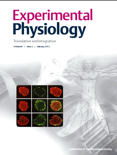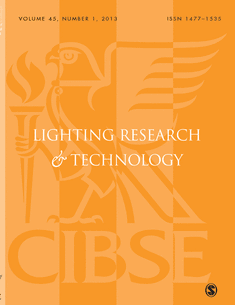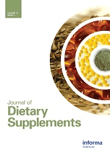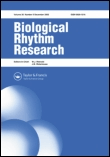
CHRONOBIOLOGY INTERNATIONAL
Scope & Guideline
Exploring the Rhythms of Life
Introduction
Aims and Scopes
- Circadian Rhythms and Health:
The journal emphasizes research on how circadian rhythms affect various health outcomes, including metabolic health, mental health, and the physiological responses to environmental changes. - Chronotype and Individual Differences:
Studies exploring the relationship between chronotype (morningness-eveningness) and individual differences in behavior, health, and performance are a core focus, reflecting the impact of personal circadian preferences. - Shift Work and Its Effects:
Research on the consequences of shift work on sleep quality, health outcomes, and circadian disruption is prominently featured, as it is pivotal in understanding occupational health. - Chrononutrition:
The journal covers the intersection of nutrition and circadian biology, examining how meal timing and dietary patterns influence health outcomes and metabolic processes. - Behavioral and Psychological Aspects of Circadian Rhythms:
Investigations into how circadian rhythms impact cognitive functions, mood, and psychological well-being are common, highlighting the importance of biological timing in behavioral sciences. - Animal Models and Experimental Studies:
The journal includes studies that utilize animal models to explore the mechanisms of circadian rhythms, contributing to the understanding of biological clocks in various species.
Trending and Emerging
- Impact of COVID-19 on Circadian Rhythms:
There is a growing body of research examining how the COVID-19 pandemic has altered sleep patterns, circadian rhythms, and overall mental health, reflecting the relevance of timely issues in public health. - Social Jetlag and Its Consequences:
Studies on social jetlag—discrepancies between biological and social clocks—and its effects on health and behavior are trending, emphasizing the importance of aligning personal rhythms with societal demands. - Chronotherapy and Timing of Interventions:
Emerging research on chronotherapy, which involves timing medical interventions to align with biological rhythms, is gaining traction, highlighting its potential for improving treatment efficacy. - Interdisciplinary Approaches to Chronobiology:
There is an increasing trend towards interdisciplinary studies combining chronobiology with psychology, nutrition, and public health, reflecting a holistic understanding of biological rhythms. - Technological Advances in Sleep Measurement:
The use of wearable technology and actigraphy in assessing sleep and circadian rhythms is on the rise, showcasing the integration of technology in chronobiological research. - Psychiatric Disorders and Chronotype:
Research linking chronotype to various psychiatric conditions, including depression and anxiety, is expanding, indicating a deeper exploration of the psychological dimensions of circadian biology.
Declining or Waning
- Purely Molecular Studies:
There is a noticeable decline in purely molecular studies focused on circadian genes without context to health or behavioral implications, as the journal shifts towards more applied research. - Generalized Sleep Studies:
Research that merely describes sleep patterns without linking them to specific health outcomes or behavioral consequences is becoming less common, indicating a trend towards more integrated studies. - Narrow Focus on Specific Populations:
Papers focusing exclusively on niche populations without broader implications or connections to general health trends seem to be decreasing, as the journal seeks to address more universal issues. - Static Models of Circadian Disruption:
The exploration of static models of circadian disruption without considering dynamic interactions with lifestyle factors or environmental variables is waning, reflecting a shift towards more comprehensive approaches.
Similar Journals

FISH PHYSIOLOGY AND BIOCHEMISTRY
Innovative Insights into Fish BiochemistryFISH PHYSIOLOGY AND BIOCHEMISTRY, published by Springer, is a leading journal in the fields of aquatic science, biochemistry, and physiology, with an impressive trajectory since its inception in 1986 and continuing through 2024. Operating from the Netherlands, this journal serves as a vital platform for researchers, professionals, and students alike, showcasing innovative studies that explore the physiological and biochemical aspects of fish, contributing significantly to our understanding of aquatic ecosystems and their inhabitants. With a robust impact factor reflected in its Q1 status in Aquatic Science and notable rankings in other relevant categories, FISH PHYSIOLOGY AND BIOCHEMISTRY maintains a strong scholarly influence, evidenced by its Scopus ranking within the top quartiles of various biological sciences disciplines. While the journal does not currently offer open access options, it remains a cornerstone for advancing knowledge and fostering collaboration within the community dedicated to aquatic biology and related fields.

EXPERIMENTAL PHYSIOLOGY
Shaping the future of Nutrition and Physiology research.EXPERIMENTAL PHYSIOLOGY, published by WILEY, stands as a vital resource in the fields of Nutrition and Dietetics and Physiology, providing high-quality, peer-reviewed research since its inception in 1990. With an impressive categorization into the Q2 quartile in these domains, the journal emphasizes the integration of experimental and clinical findings, making significant contributions to our understanding of physiological processes and nutritional impacts on health. The journal operates within a competitive landscape, ranked significantly in Scopus, showcasing its relevance to both the medical community and nutritional sciences, as evidenced by its rankings in Nursing, Medicine, and Biochemistry. Though it is not currently open access, the journal remains an indispensable tool for researchers, professionals, and students seeking to deepen their knowledge and stay updated on cutting-edge research. With a publication window extending to 2024, EXPERIMENTAL PHYSIOLOGY continues to influence the academic discourse and promote advancements in its respective fields.

Journal of Physiological Anthropology
Pioneering Research in the Intersections of Anthropology and PhysiologyThe Journal of Physiological Anthropology, published by BMC, serves as a leading platform in the field of anthropological science with a strong focus on the physiological aspects of human adaptation and performance. Since its establishment in 2006, this open access journal has gained recognition for its contributions to understanding human biological variation through an interdisciplinary lens, enabling researchers and practitioners in fields such as anthropology, orthopedics, and public health to disseminate and access high-quality research. With an impressive impact factor and a classification in the Q1 quartile for Anthropology (2023), the journal holds a prominent position, ranked #29 in Social Sciences and #76 in Orthopedics and Sports Medicine according to Scopus. The journal's objectives include fostering innovative research and promoting discussions that advance knowledge on human performance, adaptation, and health in diverse environments. As a vital resource based in the United Kingdom and available freely since 2012, it opens avenues for collaboration and knowledge exchange among researchers, professionals, and students alike.

Sleep Health
Illuminating the Path to Better Sleep and HealthSleep Health is an esteemed journal published by Elsevier, dedicated to the rapidly evolving field of sleep research. With its ISSN 2352-7218 and E-ISSN 2352-7226, this journal serves as a pivotal platform for disseminating high-quality research on the interconnections between sleep and health, covering a diverse range of topics including behavioral neuroscience, neuropsychology, and the social sciences. Since its inception in 2015, Sleep Health has achieved recognition as a Q1 journal across several categories, ranking in the 93rd percentile among social sciences, ensuring its significant influence within the academic community. Despite being a non-open access journal, it attracts a broad audience due to its commitment to advancing knowledge and understanding of sleep's critical role in human health. Situated in the United States with operational facilities in Amsterdam, the journal invites contributions from researchers and practitioners alike, fostering a multidisciplinary approach to sleep studies and encouraging collaboration across diverse fields.

Lighting Research & Technology
Advancing Sustainable Solutions in IlluminationLighting Research & Technology is a pivotal journal in the domain of electrical and electronic engineering, published by the renowned SAGE Publications Ltd. Established in 1969, it has continuously served as a platform for innovative research and advancements in lighting technology, with a strong emphasis on enhancing the quality, sustainability, and efficiency of lighting systems. With an impressive impact factor placing it in the Q2 quartile of its category, this journal ranks #238 out of 797 in the Scopus database, reflecting its substantial influence and contribution to the field. The journal offers comprehensive insights into various aspects of lighting, including photometric techniques, illumination design, and the impact of lighting on health and well-being. Although not an open-access journal, it provides valuable subscription-based content that caters to researchers, professionals, and students dedicated to pushing the boundaries of lighting technology. By engaging with the articles published in Lighting Research & Technology, readers are afforded the opportunity to stay abreast of the latest developments and best practices in this vital area of study.

Activitas Nervosa Superior Rediviva
Exploring the Frontiers of Neuropsychology and Mental HealthActivitas Nervosa Superior Rediviva is a peer-reviewed journal dedicated to the fields of neuropsychology, physiological psychology, psychiatry, and mental health research. Published by the esteemed SLOVAK ACADEMY OF SCIENCES, INSTITUTE OF NORMAL AND PATHOLOGICAL PHYSIOLOGY, this journal embraces an open-access model, facilitating the dissemination of critical findings and discussions within these evolving fields. With a focus on innovative studies spanning from 2009 to 2024, it provides a vital platform for researchers and professionals seeking to understand the complexities of the nervous system and related disorders. Although currently classified in the fourth quartile across relevant categories including neuropsychology and psychiatric health, the journal’s commitment to publishing quality research contributes significantly to the ongoing discourse among academics and clinicians alike. Activitas Nervosa Superior Rediviva invites scholars to engage with its content and further strengthen the integration of research and practice in mental health and neurological sciences.

PHYSIOLOGY & BEHAVIOR
Decoding the Complexities of Human BehaviorPHYSIOLOGY & BEHAVIOR, published by Pergamon-Elsevier Science Ltd, is a premier journal that has been illuminating the intersections of physiological and behavioral research since its inception in 1966. With a promising impact reflected in its 2023 category quartiles— ranking Q2 in both Behavioral Neuroscience and Experimental and Cognitive Psychology, and a prior Q1 in Philosophy—this journal stands at the forefront of multidisciplinary research. It holds respectable ranks within the Scopus database, placing 27th out of 165 in Experimental Psychology and 25th out of 88 in Behavioral Neuroscience, highlighting its significant contribution to the academic community. The journal encourages the dissemination of high-quality research objectives that explore the intricate connections between behavior and biological processes, making it a vital resource for researchers, professionals, and students alike. Although access is not currently open, the journal continues to provide deep insights into crucial developments in its field, ensuring its readers stay updated on the latest scientific advancements.

Sleep Science
Exploring Sleep's Impact on Health and NeuroscienceSleep Science is a premier open-access journal dedicated to advancing the understanding of sleep and its profound impact on health and well-being. Published by THIEME MEDICAL PUBL INC, this journal aims to bridge the gap between research and practice in the fields of Behavioral Neuroscience and Medicine. Since its inception in 2008, Sleep Science has become a vital resource for researchers, healthcare professionals, and students seeking to explore the intricate mechanisms of sleep, its disorders, and treatment methodologies. With a commitment to disseminating high-quality research, the journal features a diverse range of articles covering the latest findings in sleep studies. Notably ranked in the Q3 category in 2023 across Behavioral Neuroscience, Medicine, and Neuroscience (miscellaneous) in Scopus, it provides a platform for scholarly discourse and innovation. The journal's open-access model ensures that critical insights are available to a wide audience, thereby promoting collaborative efforts to improve sleep health globally. For more detailed information, visit 333 SEVENTH AVE, NEW YORK, NY 10001.

Journal of Dietary Supplements
Fostering Insights in Food Science and PharmacologyThe Journal of Dietary Supplements, published by TAYLOR & FRANCIS LTD, stands as a premier academic outlet in the fields of food science, nutrition, and pharmacology. With a notable impact factor reflecting its rigorous peer-review process and high-quality research, this journal serves as an essential resource for researchers, healthcare professionals, and students alike. Its indexed ISSN 1939-0211 and E-ISSN 1939-022X signify its dedication to disseminating cutting-edge studies and reviews, covering topics from dietary interventions to the efficacy of various supplements. Since its inception in 2008, the journal has emerged as a vital contributor to the scientific community, maintaining a Q2 rank in multiple categories, indicating its influence and reach. While it operates under a traditional subscription model, the journal’s commitment to advancing knowledge in nutrition and dietary science is evident in its comprehensive scope and a diverse array of high-impact articles. Located in the United States, the journal continues to invite submissions that will advance understanding and application of dietary supplements in enhancing health outcomes.

BIOLOGICAL RHYTHM RESEARCH
Pioneering Research: The Frontier of Biological Rhythm StudiesBIOLOGICAL RHYTHM RESEARCH is a distinguished journal dedicated to the exploration of biological rhythms, encompassing a spectrum of subjects related to ecology, evolution, and physiology. Published by Taylor & Francis Ltd, this journal serves as an essential platform for researchers and professionals alike to disseminate and engage with cutting-edge findings in the field. With an ISSN of 0929-1016 and an E-ISSN of 1744-4179, it has established a significant academic presence since its inception in 1994, with converged years extending to 2024. As classified in the 2023 category quartiles, it holds a Q3 ranking in Ecology, Evolution, Behavior and Systematics and Q4 in both Physiology and Medical Physiology, indicating its growing influence and the relevance of its research contributions. Although it does not operate under an open access model, the journal remains a vital resource for those pursuing an understanding of circadian rhythms and their implications across disciplines. With robust Scopus ranking placements highlighting its commendable standing within Agricultural and Biological Sciences, Medicine, and Biochemistry, the journal positions itself as an indispensable resource for students, researchers, and educators aiming to deepen their understanding of biological rhythms and their broader ecological significance.